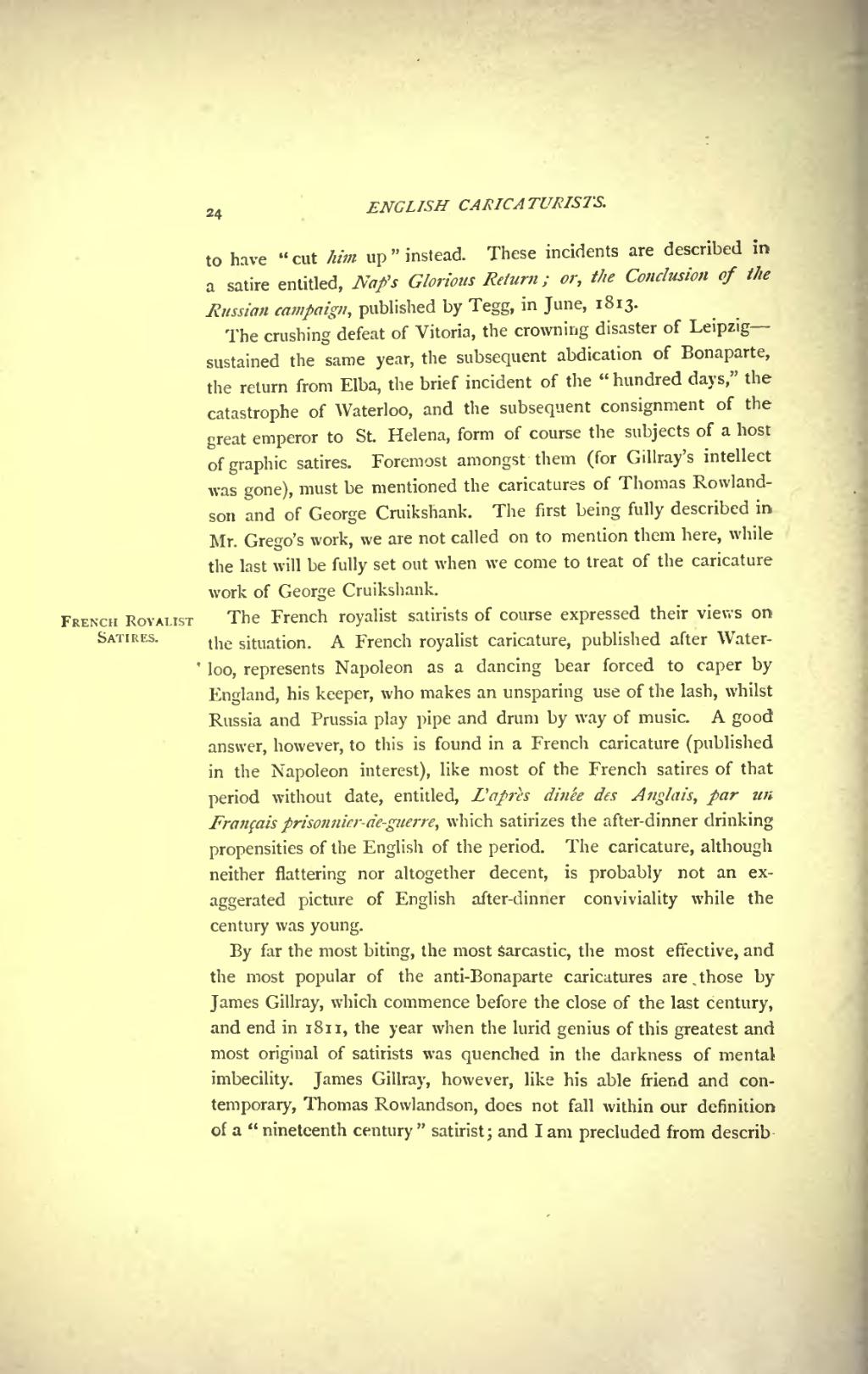to have "cut him up" instead. These incidents are described in a satire entitled, Naps Glorious Return; or, the Conclusion of the Russian campaign, published by Tegg, in June, 1813.
The crushing defeat of Vitoria, the crowning disaster of Leipzig—sustained the same year, the subsequent abdication of Bonaparte, the return from Elba, the brief incident of the "hundred days," the catastrophe of Waterloo, and the subsequent consignment of the great emperor to St. Helena, form of course the subjects of a host of graphic satires. Foremost amongst them (for Gillray's intellect was gone), must be mentioned the caricatures of Thomas Rowlandson and of George Cruikshank. The first being fully described in Mr. Grego's work, we are not called on to mention them here, while the last will be fully set out when we come to treat of the caricature work of George Cruikshank.
French Royalist Satires.The French royalist satirists of course expressed their views on the situation. A French royalist caricature, published after Waterloo, represents Napoleon as a dancing bear forced to caper by England, his keeper, who makes an unsparing use of the lash, whilst Russia and Prussia play pipe and drum by way of music. A good answer, however, to this is found in a French caricature (published in the Napoleon interest), like most of the French satires of that period without date, entitled, L'après dinée des Anglais, par un François prisonnier-de-guerre, which satirizes the after-dinner drinking propensities of the English of the period. The caricature, although neither flattering nor altogether decent, is probably not an exaggerated picture of English after-dinner conviviality while the century was young.
By far the most biting, the most sarcastic, the most effective, and the most popular of the anti-Bonaparte caricatures are, those by James Gillray, which commence before the close of the last century, and end in 1811, the year when the lurid genius of this greatest and most original of satirists was quenched in the darkness of mental imbecility. James Gillray, however, like his able friend and contemporary, Thomas Rowlandson, does not fall within our definition of a "nineteenth century" satirist; and I am precluded from describ-

